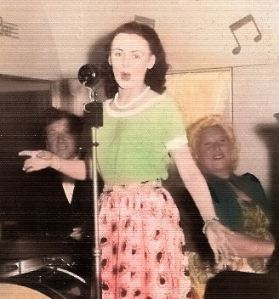Tonight I
managed to update my main database data in connection with my 4th
great-grandfather Thomas MOUNSER.
Thomas
was born in Eye in Suffolk in 1788. At the moment, only the year of his birth
can be found. The data has thus been marked as unconfirmed, as the information
has been discovered on other Ancestry public websites with no firm sources
defined.
Eye is a
small market town situated in North Suffolk, England. Its name is derived from
an Old English word meaning 'island', as the village was potentially surrounded
by water and marshland, with its castle standing on the high ground in the
centre. Eye is known for its vibrant country market and the impressive church
of St Peter & St Paul, which dates back to around 1470.
 |
| Village Cross - Eye, Suffolk |
Thomas
was baptised in the town on the 1 June 1789. This was an interesting data find
in the Birth & Christening registers, as his name had been mis-spelled
'MONNSER' on the record. This entry also revealed the names of his father and
mother for the first time - Richard and Elizabeth MONNSER. Up to this point
their names had previously been unknown to me.
Thomas
had a son - John - born 29 August 1814. It is not clear at present who his
mother is, as her name was given to be Ann. Thomas did not marry his wife Ann
ALFORD until 4 November 1816, and his status was said to be 'widowed', so it is
possible that John's mother was actually his first wife. This has yet to be
determined and is yet just one other mystery of this family which needs to be
resolved. Thomas was aged 25 at the time of the birth.
Another
son, George, was born 29 September 1816. It is likely that the Ann mentioned on
this birth record was in fact Ann ALFORD, who Thomas married later that year in
November. Thomas was 27 years old when George was born.
 |
| St Peter and St Paul's church - Eye, Suffolk |
A third
son, James, was born on 16 September 1818. He died just over a year afterward
on 5 November 1819. Thomas was 30 years old when the infant died.
On 21
December 1820, the couple had a daughter, Maria MOUNSER. Maria was destined to become my 3rd
great-grandmother.
Thomas
died in October 1843 in Friskney in Lincolnshire. He was 54 years old at the
time. His wife, Anne ALFORD, outlived him and died in Friskney in March of
1875, aged 81 years of age.
Looking
at the data I have on this family, it seems obvious that there are still some
further questions to be answered. Why did the family end up in Friskney, almost
100 miles away from Eye in Suffolk where Thomas was born? What was Thomas'
occupation? Was there a first wife and earlier marriage? Have we found all the
children which came from the marriages?
Going
back and researching the records of the 18th century is undoubtedly harder the
further we go back in time, and we obviously need to be careful not to take the
information at face value. But that is precisely what makes this research so
interesting and worthwhile.




